This is a beginner’s static stretching program that you may follow to gradually increase your range of motion. It is best to perform static stretching after working out. Static stretching refers to stretches that must be held motionless. Your muscles become more flexible and range-of-motion is increased.
Most people might think that stretching is optional. However, it is just as crucial as working out. For both novices and experts, stretching offers numerous advantages.
To improve the efficiency of your performance, stretching is essential.
READ MORE: The importance of stretching
To achieve maximum benefit, you should;
- relax as much as you can
- be aware of your breathing
- be sure, all of your muscles are getting enough oxygen
- let your muscle fibers relax gently
- avoid jerky movements
Frequent stretches are the best approach to increase flexibility. In the same way as strength training concentrates on the main muscle groups, stretching the muscles of the neck, back, shoulder, chest, arms, hips, legs, and belly is also necessary.
As with cardiorespiratory and muscle strength programs, the FITT can be used to create a safe & effective stretching program.
FITT PRINCIPLE:
FITT is an acronym that stands for frequency, intensity, time & type.
Frequency:
Stretch for two or three days a week, either during a warm-up or at the conclusion of your workout. Stretching while your muscles are warm reduces your chance of injury.
Intensity:
Stretch to the limit of the joint’s range of motion, but stop short of becoming in pain. Just till you start to feel tightness or discomfort. For each stretch, you must perform two to four repetitions.
Time:
Hold every stretch for 15 to 30 seconds.
Type:
Stretch statically rather than ballistically. This means that when you stretch all of the major muscle groups, you should hold the stretch and not bounce.
NOTE: Take short breaks between each of the stretches outlined in this workout. This speed reduces the overall amount of time you spend working out while maintaining the health of your heart.
Static Stretching Routine For Beginners
Neck stretch
- Ear to shoulder

2. chin to chest
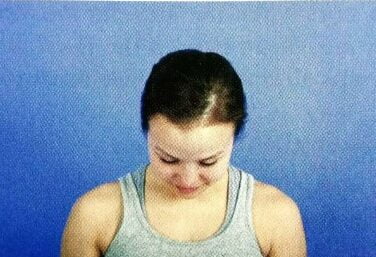
3. Look right & left
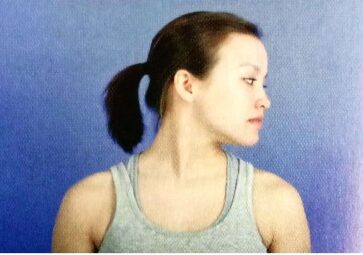
Upper back stretch
Technique: Place yourself several feet away from a table or desk, with your knees slightly bent. Bending at the waist, lean forward and press both hands against the desk or table. Stretch your upper back by applying pressure on the surface.
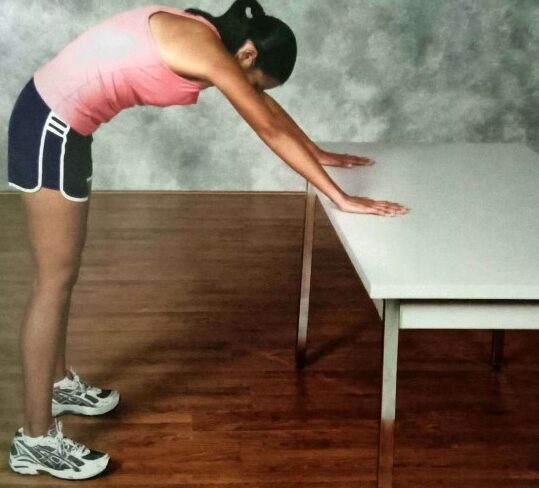
Lower back/Hamstrings/Gluteals stretch
Technique:Assume a prone position. With the other leg flat on the floor, bend one knee and pull it near your chest. To extend your lower back, place both hands behind your bent knee and pull it toward your chest. Next, take a gradual step back to where you were before.
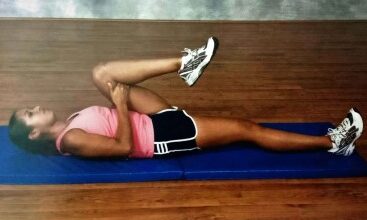
Shoulder stretch
Technique: Place your feet shoulder-width apart as you stand. Grab your right arm by the elbow with your left hand and reach across your chest with your right. To extend your right shoulder, bring your right arm over your chest. Continue with the other shoulder and arm.
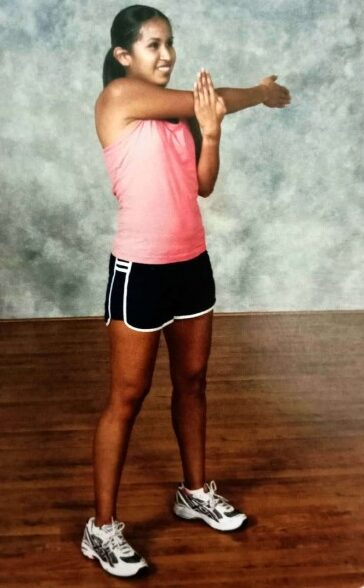
Chest stretch
Technique: Place your feet shoulder-width apart as you stand. Make sure you extend both hands behind your back and interlace your fingers. To open your chest, slowly raise your hands above your head.
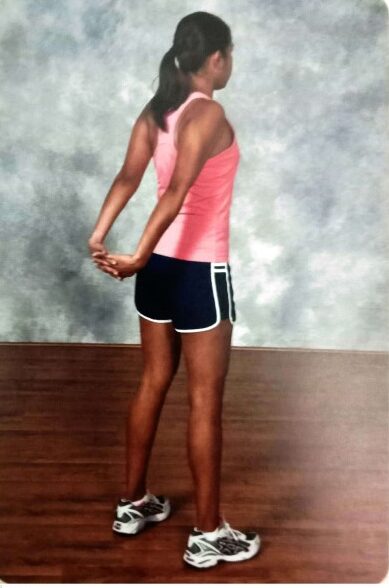
Forearm stretch
Technique: Place your feet shoulder-width apart as you stand. With your palm and forearm pointing upward, stretch your right arm in front of you. Now, stretch your biceps by using your left hand to help you hold your right hand’s fingers and slowly draw them back. Continue with the opposite arm.
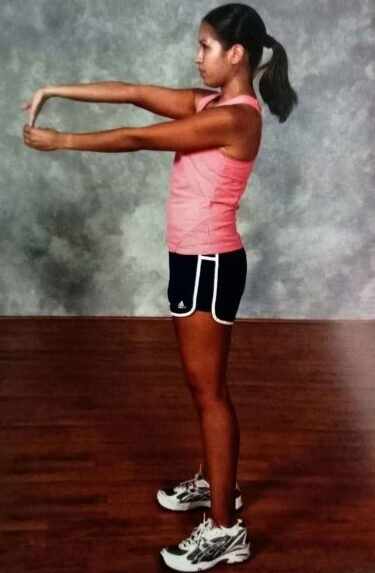
Tricep stretch
Technique: Place your feet shoulder-width apart as you stand. Raise your left arm over your head, then extend your elbow down your back to extend your left arm’s triceps. Reach your left arm further down your back while placing your right hand on your left elbow and applying light downward pressure. Continue with the opposite arm.
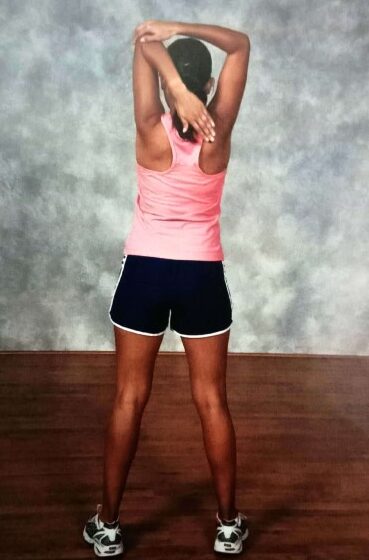
Abdominal stretch
Technique:On the ground, lie prone. Put your forearms against your chest’s sides. Lift your head and chest off the ground by arching your back and applying gentle pressure to the floor. To lessen the strain on your lower back, avoid bending too much and squeeze your buttocks.
(As seen in the picture, perform an advanced stretch by placing both hands’ palms on the floor, side by side, across your chest.)
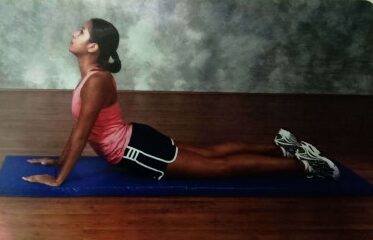
Quadriceps stretch
Technique:
Stand with your feet close together. Bend your left knee. With your left hand, grab your left foot and pull it toward your buttocks to stretch your quadriceps. Repeat with the other leg.
( You can also lean against a wall with your other hand to help keep your balance)

Hamstrings stretch
Technique: Extend your right leg straight out in front of you while seated on the floor. Bend your left leg till your left foot’s bottom meets your right foot’s knee. Now, gently bring your right toes back toward you by grasping them. Continue with a different leg.
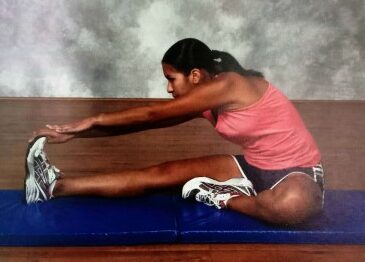
Hip stretch
1) Technique: Put your left knee on the ground. Next, position your right foot flat on the floor in front of you and bend your right knee. Lean forward toward your right leg without bending your torso. Continue with the opposite leg.

2) Technique: With your right leg out in front of you, take a seat on the floor. On the outside of your right knee, bend your left knee and plant your left foot flat on the ground. With your left palm flat on the ground for support, press your right elbow toward the outside of your left knee. Twist your upper body to the left while pressing your right elbow up against your left knee. Avoid hunching over or bending forward at the waist. Continue with the opposite leg.
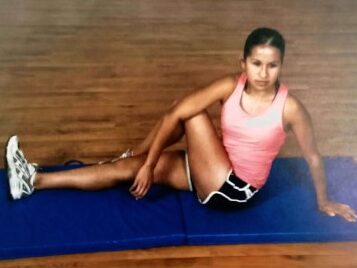
Calf stretch
Technique: With your left leg back and your right leg forward, place both hands against a wall. Make sure your right knee does not extend past your right toes when bending it. Put all of your weight on your right leg and lean on the wall. Keeping your left heel planted, extend the rear of your left leg. To stretch the other calf, switch legs.
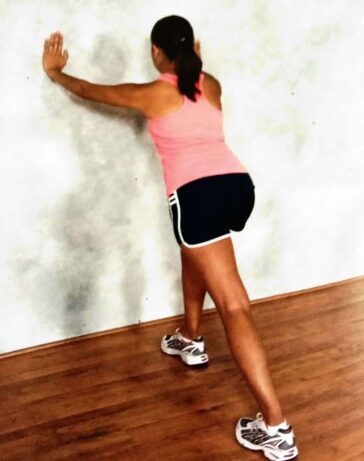
Conclusion:
It’s crucial for beginners to perform this stretching practice to improve flexibility and lower their chance of injury.
An effective exercise program can be created using the tried-and-true FIIT technique.
To increase your body’s flexibility and decrease its susceptibility to injury, incorporate stretching into your regular exercise regimen by following this program.
HAVE YOU DONE STRETCHING TODAY?
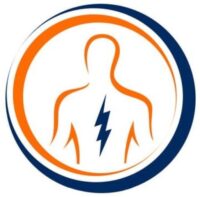
Wonderful web site. Lots of useful info here. I’m sending it to a few friends ans additionally sharing in delicious. And obviously, thanks to your effort!
Thank you for taking the time to comment! Your feedback is valuable and greatly appreciated. If you have any suggestions or specific topics you’d like to see covered in our blog, feel free to share. We’re constantly striving to create content that resonates with our audience. Stay tuned for more engaging articles!
Wow, superb blog layout! How long have you been blogging for? you make blogging look easy. The overall look of your site is magnificent, as well as the content!
Thankyou Nancy Vargas for taking the time to comment! Your feedback is valuable and greatly appreciated. If you have any suggestions or specific topics you’d like to see covered in our blog, feel free to share. We’re constantly striving to create content that resonates with our audience. Stay tuned for more engaging articles!